Embarking on the journey of cultivating your first garden is like opening the door to a world of endless possibilities and vibrant new beginnings. Whether you’re sowing your first seeds or adding to a flourishing landscape, choosing the right plants can be the difference between a thriving oasis and a patch of frustration. This guide is crafted to introduce you to the best plants that promise not only to survive but to flourish under your care, no matter your level of expertise.
For beginners, selecting plants that are resilient and forgiving can make the process less daunting and more rewarding. Even seasoned green thumbs will find joy in revisiting some of these classic choices, perhaps discovering new ways to enhance their cultivation techniques. In the following sections, we’ll explore a variety of plant options, each chosen for its adaptability and ease of growth, ensuring your gardening experience is as fruitful as it is enjoyable.
Beyond plant selection, this article will provide insights into the essential care each plant requires, from sunlight needs to watering schedules, offering a comprehensive resource to nurture your burgeoning garden. You’ll learn not only which plants suit different environments and climates but also how to harmonize them with your personal style and space constraints. With this knowledge, you’ll be well on your way to creating a garden that reflects both your vision and the unique beauty of nature, filling your space with life and color.
Cherry Tomato Plants (Low Maintenance and High Yield)
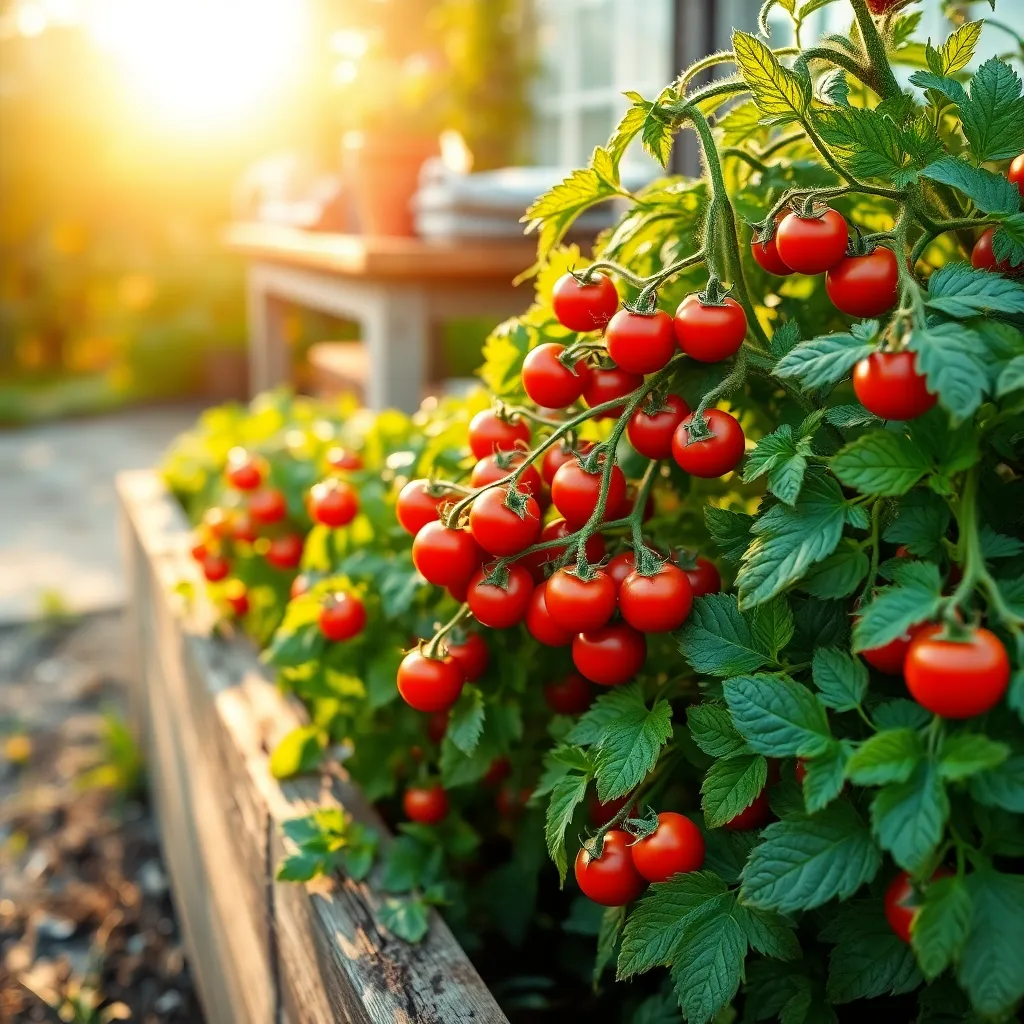
Cherry tomato plants are perfect for beginners because they are low maintenance and offer a high yield. They can thrive in both garden beds and containers, making them versatile for any garden space.
To get started, choose a sunny spot as cherry tomatoes need 6 to 8 hours of sunlight daily. Ensure the soil is well-draining and rich in organic matter; adding compost can greatly enhance soil fertility.
Watering is crucial for cherry tomatoes; aim for consistent moisture but avoid waterlogging. A good rule of thumb is to water deeply once or twice a week, depending on rainfall and temperature.
For those looking to maximize yield, consider staking or caging your plants to support growth and improve air circulation. This also makes harvesting easier and helps prevent diseases by keeping foliage off the ground.
Fertilize your plants with a balanced tomato fertilizer every 4 to 6 weeks to promote healthy growth and fruit production. As your plants grow, regularly check for pests like aphids and caterpillars, and remove them by hand or use organic pest control methods.
Basil Herb Kits (Beginner-Friendly Aromatics)
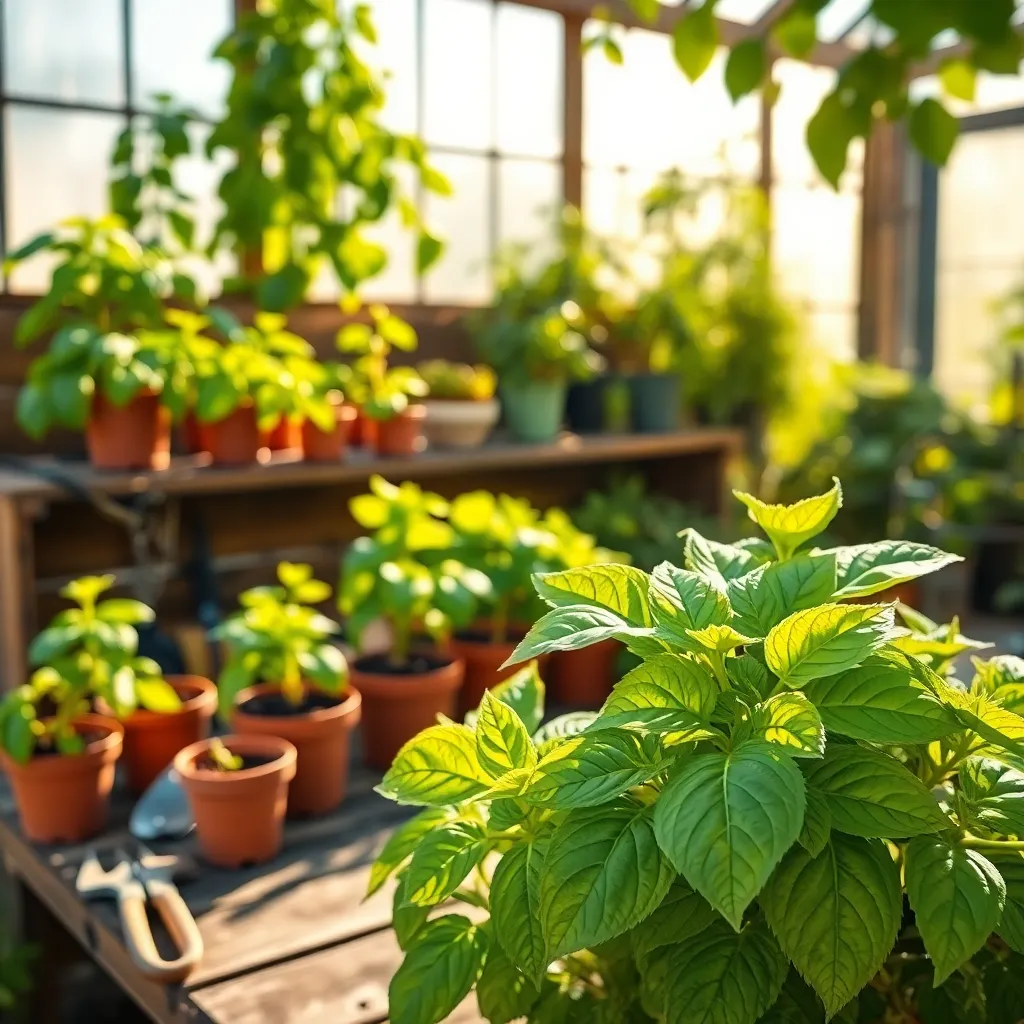
Basil is an excellent choice for beginner gardeners who want to start with a **versatile and fragrant herb**. It thrives in a variety of conditions, making it easy to grow both indoors and outdoors.
For optimal growth, use a **well-draining potting mix** and ensure your basil receives at least six hours of sunlight daily. If growing indoors, place your basil near a south-facing window or use a grow light to supplement natural light.
Keep the soil consistently moist but not waterlogged by watering deeply whenever the top inch of soil feels dry. Consider using a self-watering planter to maintain a consistent moisture level, which is especially helpful for beginners.
Pinch off the top leaves regularly to encourage bushier growth and prevent the plant from flowering too early. As an advanced tip, you can propagate basil by taking cuttings and placing them in water until roots develop, providing you with new plants for free.
Self-Watering Planters (Consistent Moisture Control)
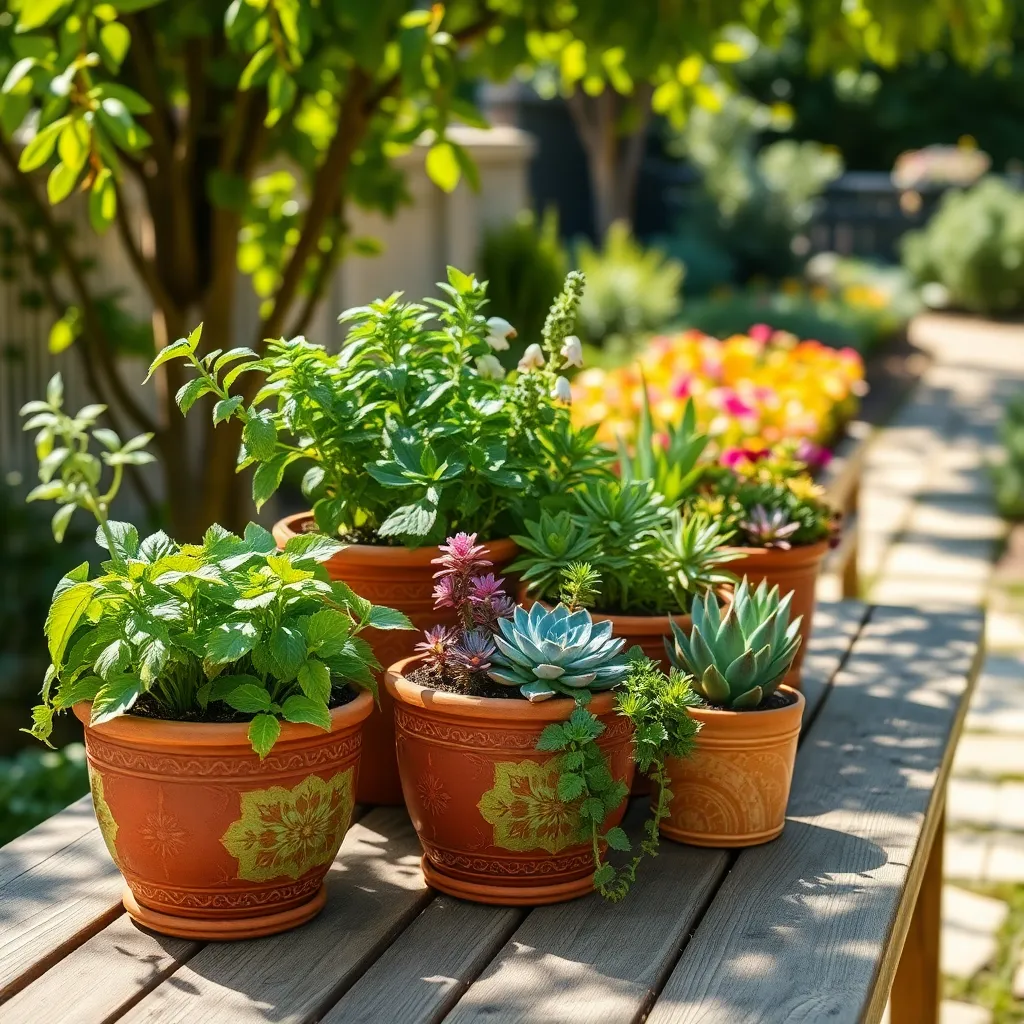
Self-watering planters are a fantastic choice for beginners seeking consistent moisture control for their plants. These planters feature a reservoir system that delivers water directly to the roots, ensuring plants receive a steady supply of moisture without the risk of overwatering.
To start, fill the reservoir according to the manufacturer’s guidelines and check regularly to maintain optimal water levels. This setup minimizes the need for daily watering, making it ideal for busy gardeners who may forget to water consistently.
When selecting soil, opt for a lightweight potting mix that allows easy water absorption and efficient drainage. Incorporating materials such as perlite or vermiculite can enhance soil aeration and prevent root rot by ensuring excess moisture drains away effectively.
Advanced gardeners can enhance the self-watering system by adding a layer of mulch on top of the soil. This helps retain moisture and reduce evaporation, particularly in hot climates, ensuring your plants thrive even during dry spells.
Companion Planting Techniques (Boost Growth and Pest Control)
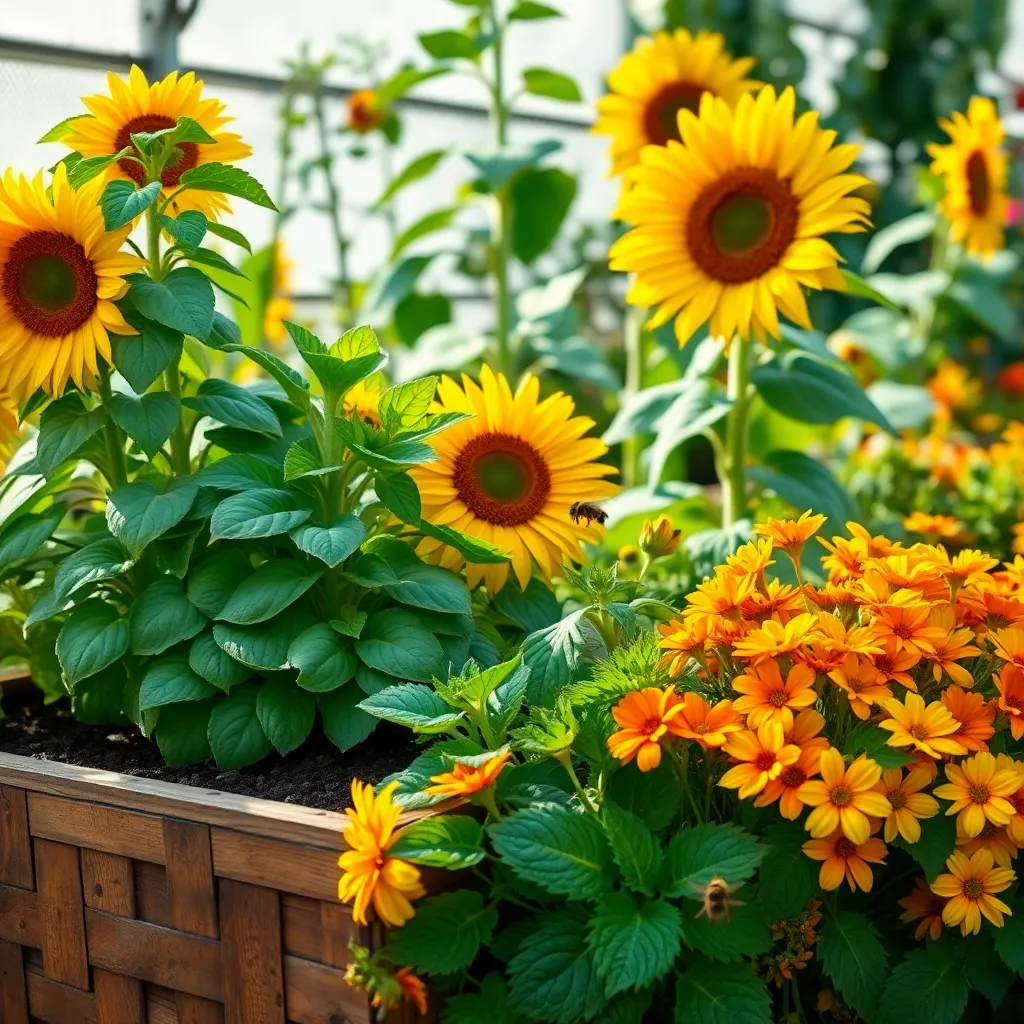
Companion planting is an effective technique to boost plant growth and control pests naturally. By strategically placing certain plants together, you can enhance their growth, improve soil fertility, and deter common garden pests.
For beginners, a simple combination like tomatoes and basil can be a great start. Basil not only enhances the flavor of tomatoes but also helps in repelling pests like aphids and whiteflies.
Consider planting marigolds around your vegetable garden as they are known to deter nematodes and other harmful insects. Their bright flowers also attract beneficial pollinators, which can increase your garden’s productivity.
Advanced gardeners might explore the pairing of carrots and onions, which can help deter carrot flies and onion flies. Ensure your soil is well-drained and loamy for both crops, and water them consistently to support their growth.
When planning your garden, remember that not all plants make good companions. Avoid planting onions near beans and peas as they can stunt each other’s growth. Understanding these relationships will allow you to create a more resilient and productive garden environment.
Perennial Wildflowers (Year-After-Year Blooms)
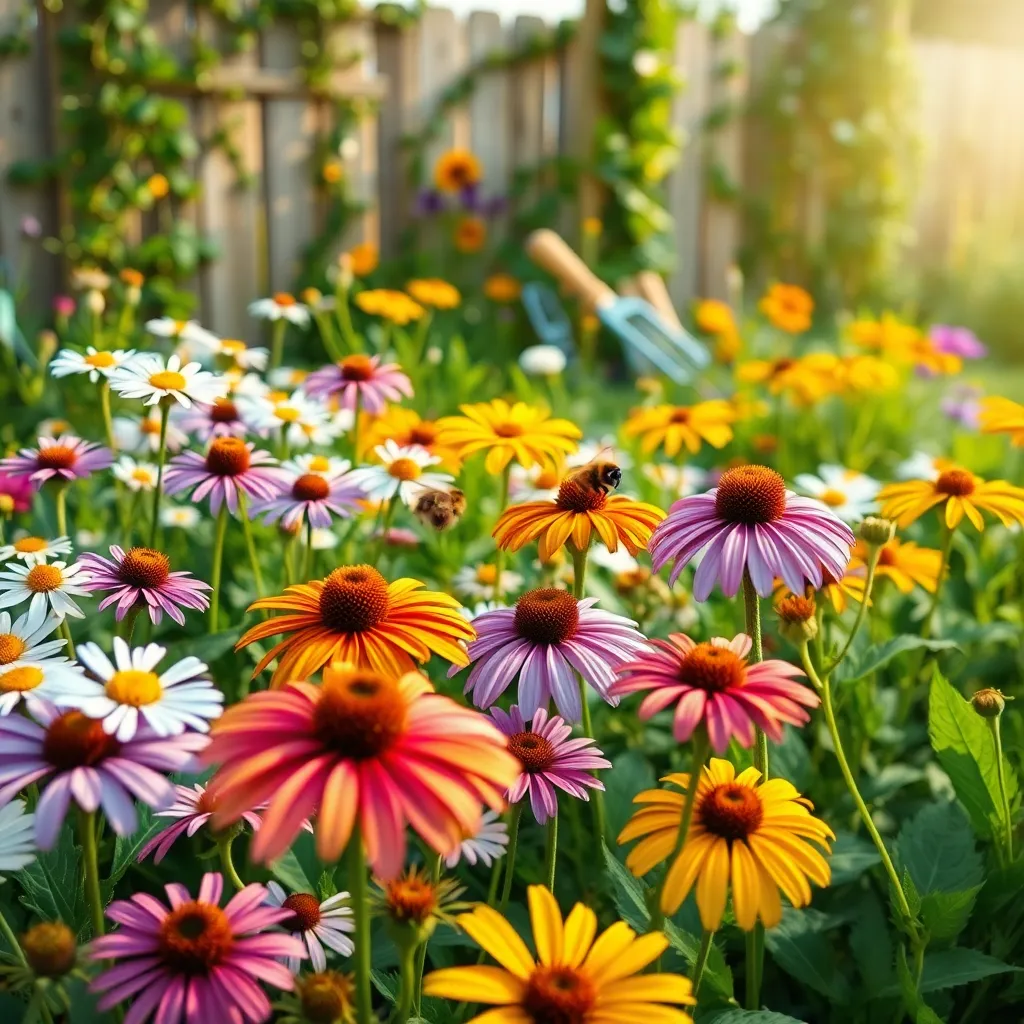
Perennial wildflowers are a delightful choice for gardeners seeking vibrant blooms that return year after year. These hardy plants not only bring color and life to your garden but also require less maintenance over time compared to annuals.
To get started, choose a sunny location with well-drained soil, as most perennial wildflowers thrive in these conditions. Consider mixing compost into your soil to improve drainage and provide a nutrient boost, which will help your flowers establish strong roots.
Water newly planted perennials regularly until they are established, typically within the first season. Once established, many perennial wildflowers become drought-tolerant, needing only occasional watering during prolonged dry spells.
For beginners, consider planting easy-to-grow varieties such as Black-eyed Susans, Coneflowers, or Blanket Flowers. These particular species are not only beautiful but also attract pollinators like bees and butterflies, enhancing your garden’s ecosystem.
Conclusion: Growing Success with These Plants
In embarking on your first gardening journey, you’ve also sown the seeds for nurturing relationships, both with nature and loved ones. We’ve explored five key concepts: the importance of starting with easy-to-grow plants, understanding the needs of your plants as you would a partner, the value of patience and persistence in growth, the joy of shared gardening experiences, and the resilience required to weather challenges together. As you cultivate your garden, let these principles guide your personal relationships, providing fertile ground for them to flourish.
To take immediate action, choose one small gardening task to share with a loved one this week, fostering connection through collaboration. Whether it’s planting seeds or simply watering together, these moments can strengthen your bond.
Remember, the garden of relationships thrives on consistent care and attention. Bookmark this article as your go-to guide whenever you need a reminder of these nurturing principles. As you tend to your garden and relationships, envision a future where both blossom beautifully, reflecting the love and effort you’ve invested. Your journey towards relationship success starts now, rooted in the wisdom you’ve gathered here.

